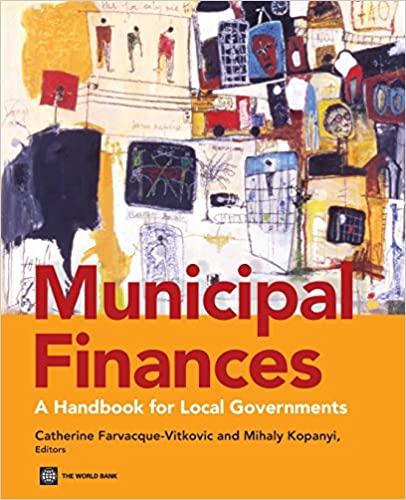Question
You have $100,000 to invest. Your investment strategy must include at least two options on a stock of your choice (all options must be on
You have $100,000 to invest. Your investment strategy must include at least two options on a stock of your choice (all options must be on the same stock). They can be either calls or puts or both, with any strike price, as long as all options in your portfolio expire on the same date, and that date is no earlier than January 2020. You can build spreads, straddles, collars, etc. your choice. Buy them or write them your choice. Assume no transaction costs.
Make sure you pick liquid options, i.e. options that actually trade daily with substantial trading volume.
Whatever positions you take, assume you will liquidate them on November 20, 2019.
Design an investment strategy that would pay off in the event that you believe is the most likely outcome of the stock. For example, your stock is having the earnings call soon. If you believe that the earnings call will result in a positive surprise and the stock price will increase, you should design an option strategy that will pay off if the stock price goes up. Or if you think that the direction of the surprise is hard to predict but you expect a significant surprise either way, design an option strategy that will pay off in the event of high volatility. Etc., whichever outcome you bet on, design an option strategy that will pay off in that case.
When designing your strategy, think about maximizing return while minimizing risk.
When designing your strategy, think about maximizing return while minimizing risk.
For example, suppose you want to buy a March 2020 call option on your stock because you expect a positive earnings surprise in the next quarterly earnings call in November 2019. Suppose todays price of the March 2020 call struck at $60 is bid $4.75, ask 5.15. So if you want, for example, to buy $100,000 worth of call options, you will need to spend $515 per each round lot (100 shares) and you can buy $100,000 / $515 = 194 contracts.
The underlying stock trades at $63 right now. Suppose it experiences a positive earnings surprise in November, as you had expected, and the stock price shoots up to $68. Then your options will end up in the money by 68 60 = $8 per share, but they should be worth even more than that (because its still a long way until March): suppose they are worth $10 per share.
Your profit will be (10 5.15) * 194 * 100 = $94,090.
However, what is your downside? Suppose that the November earnings call ends up a disaster, and stock price declines to $58 per share. Your calls are out of the money now (58 < 60), but of course they are still worth something, since its still a long way until March. Suppose that the premium drops to $3.15 per share.
Your loss will be (3.15 5.15)*194*100 = -$38,800
So when you decide on the strategy, you need to think about your potential downside as well as your potential profit, and design the strategy with both in mind!
In my example, is there anything you can potentially do to reduce that downside in the event the earnings call proves a disaster? Should you buy a put option maybe, which will pay if stock price declines? Should you write a call maybe, which will give you some money upfront? Thats something to analyze, something to think about.
Bottom line is, design a strategy involving at least two options, which provides you with the risk-return profile you want.
Step by Step Solution
There are 3 Steps involved in it
Step: 1

Get Instant Access to Expert-Tailored Solutions
See step-by-step solutions with expert insights and AI powered tools for academic success
Step: 2

Step: 3

Ace Your Homework with AI
Get the answers you need in no time with our AI-driven, step-by-step assistance
Get Started


